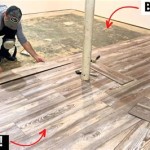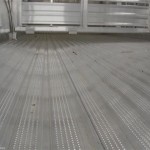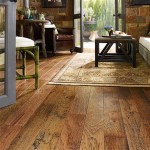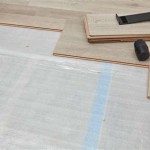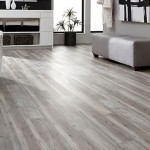Light Brown Vinyl Plank Flooring: A Comprehensive Guide
Light brown vinyl plank flooring has emerged as a popular choice for homeowners and designers seeking a balance of aesthetic appeal, affordability, and durability. This flooring option offers a versatile canvas that can complement a wide range of interior design styles, from rustic farmhouse to modern minimalist. Beyond its visual appeal, light brown vinyl plank flooring boasts practical advantages that make it suitable for various spaces within the home or commercial setting.
Vinyl plank flooring, in general, is engineered to mimic the look and feel of natural materials like hardwood, stone, or ceramic tile. Light brown shades specifically aim to replicate the warmth and inviting character of natural wood. The manufacturing process involves layering different materials to achieve the desired look, texture, and performance characteristics. The core layer provides stability and water resistance, while the decorative layer features a high-resolution image of the desired material. A protective wear layer is applied on top to resist scratches, stains, and fading.
The growing popularity of light brown vinyl plank flooring can be attributed to several factors, including its affordability, ease of installation, and low maintenance requirements. It provides a cost-effective alternative to hardwood flooring, without sacrificing aesthetic appeal. Furthermore, its water-resistant properties make it suitable for areas prone to moisture, such as bathrooms and kitchens. This article will explore the benefits, considerations, and installation processes associated with light brown vinyl plank flooring.
Key Benefits of Light Brown Vinyl Plank Flooring
Light brown vinyl plank flooring offers several distinct advantages that make it a compelling choice for various applications. These benefits extend beyond aesthetics and encompass practical considerations important to homeowners and commercial property owners alike.
One significant benefit is its inherent water resistance. Unlike hardwood, which can warp and swell when exposed to moisture, vinyl plank flooring is designed to withstand spills, leaks, and humidity. This makes it an ideal choice for bathrooms, kitchens, laundry rooms, and basements, where moisture levels are typically higher. The water-resistant properties also simplify cleaning and maintenance, as spills can be easily wiped up without causing permanent damage.
Durability is another key advantage of light brown vinyl plank flooring. The wear layer, typically made of urethane or a similar protective material, is designed to resist scratches, dents, and scuffs from everyday wear and tear. This makes it a suitable option for high-traffic areas, such as hallways, living rooms, and commercial spaces. The thickness of the wear layer is a crucial factor in determining the flooring's overall durability, with thicker layers providing greater protection.
Installation ease is a further benefit that contributes to the flooring's popularity. Many vinyl plank flooring products are designed for DIY installation, using click-lock systems that allow the planks to be easily snapped together without the need for adhesives or specialized tools. This can save homeowners significant installation costs compared to other flooring options that require professional installation. For larger or more complex spaces, however, professional installation may still be recommended to ensure a proper and long-lasting result.
Finally, the comfort factor should not be overlooked. Vinyl plank flooring offers a slightly softer and warmer feel underfoot compared to hard surfaces like tile or stone. This can be particularly appreciated in rooms where people spend a lot of time standing or walking. The resilience of the material also helps to reduce noise transmission, creating a quieter and more comfortable living environment.
Factors to Consider When Choosing Light Brown Vinyl Plank Flooring
Selecting the right light brown vinyl plank flooring requires careful consideration of several factors, ensuring that the chosen product meets the specific needs and requirements of the intended space. These considerations range from aesthetic preferences to practical aspects of functionality and budget.
The first factor to consider is the shade and grain pattern. Light brown encompasses a wide spectrum of tones, from warm honey hues to cooler taupe shades. The choice depends on the desired aesthetic and the existing décor of the room. A lighter shade can brighten up a small space, while a darker shade can add warmth and sophistication to a larger room. The grain pattern, which mimics the natural markings of wood, also plays a crucial role in the overall look. Options range from subtle, uniform patterns to more prominent, rustic patterns with knots and variations.
Another important consideration is the thickness of the plank and the wear layer. Thicker planks generally provide greater stability and durability, making them a better choice for high-traffic areas or spaces where heavy furniture will be placed. The wear layer, measured in mils (thousandths of an inch), determines the flooring's resistance to scratches, stains, and fading. For residential use, a wear layer of 12 mils or higher is typically recommended, while commercial spaces may require a wear layer of 20 mils or higher.
The installation method is another crucial factor to consider. Vinyl plank flooring is typically available in two main installation methods: glue-down and click-lock. Glue-down flooring requires the use of adhesive to secure the planks to the subfloor. This method provides a more permanent and stable installation but can be more challenging for DIYers. Click-lock flooring, on the other hand, utilizes a tongue-and-groove system that allows the planks to be easily snapped together. This method is generally easier for DIY installation and allows for future replacement or repairs. Consider the suitability of each method based on personal skill level and the specific requirements of the subfloor.
The type of vinyl plank flooring is also pertinent. There are primarily two types like SPC (Stone Plastic Composite) and WPC (Wood Plastic Composite) vinyl flooring. SPC is known for its rigid core giving it more stability, water resistance and durability, while WPC features a softer and more comfortable underfoot feel due to its wood particle core, but may be susceptible to denting in areas with heavy foot traffic.
Finally, budget is always an important consideration. Light brown vinyl plank flooring is available in a wide range of price points, depending on the quality, features, and brand. It is important to establish a budget beforehand and compare different options within that range. While it may be tempting to opt for the cheapest option, investing in a higher-quality product with a thicker wear layer and a more durable construction can ultimately save money in the long run by reducing the need for repairs or replacements.
Installation of Light Brown Vinyl Plank Flooring
The installation process for light brown vinyl plank flooring is generally straightforward, particularly with click-lock systems. However, proper preparation and attention to detail are essential to ensure a successful and long-lasting installation. Whether undertaking a DIY project or hiring a professional installer, understanding the key steps involved is crucial.
The first step is to prepare the subfloor. The subfloor must be clean, level, and dry. Any existing flooring, such as carpet or linoleum, should be removed. Any imperfections in the subfloor, such as cracks or unevenness, should be repaired before installing the vinyl plank flooring. This may involve patching holes with leveling compound or sanding down high spots. A smooth and even subfloor is critical for ensuring a flat and stable surface for the vinyl planks.
Next, acclimate the vinyl planks to the room temperature for at least 48 hours before installation. This allows the planks to expand or contract slightly, preventing gaps or buckling after installation. Store the planks in the room where they will be installed, away from direct sunlight or heat sources. This acclimation period is particularly important for click-lock systems, as it can affect the ease and accuracy of installation.
Before starting the installation, determine the layout of the planks. It is generally recommended to start along a straight wall and work your way across the room. Consider the direction of the planks and how they will align with the room's features, such as windows, doors, and walls. It is also important to plan for any transitions between different types of flooring. Leave an expansion gap of approximately ¼ inch around the perimeter of the room to allow for natural expansion and contraction.
During installation, carefully align the planks and engage the click-lock mechanism. Use a tapping block and a rubber mallet to gently tap the planks together, ensuring a tight and secure fit. Avoid using excessive force, as this can damage the planks. Stagger the end joints of the planks to create a more visually appealing and structurally sound floor. Use a utility knife or a flooring cutter to trim the planks to fit around obstacles or along walls.
After the installation is complete, clean the floor with a damp mop to remove any dust or debris. Avoid using harsh chemicals or abrasive cleaners, as these can damage the wear layer. Install baseboards or quarter-round molding to cover the expansion gap around the perimeter of the room. These finishing touches will give the floor a clean and professional look.
For glue-down installations, follow the manufacturer's instructions carefully regarding the type of adhesive to use and the application method. Ensure that the adhesive is evenly spread across the subfloor and that the planks are properly aligned before pressing them into place. Use a roller to firmly press the planks into the adhesive, ensuring good contact. Allow the adhesive to dry completely before walking on the floor.
Ultimately, the successful installation of light brown vinyl plank flooring depends on careful preparation, attention to detail, and adherence to the manufacturer's instructions. Whether undertaking a DIY project or hiring a professional, understanding the key steps involved is essential for achieving a beautiful and durable floor.

Brown Light Vinyl Plank At Com

Lacheery 6 X36 L And Stick Vinyl Plank Flooring Light Brown Wood Floor Tiles Waterproof Look Removable Bathroom Tile Planks 4

Tranquility Ultra 5mm River Walk Oak Waterproof Luxury Vinyl Plank Flooring 6 In Wide X 48 Long Ll

Coreluxe Xd 7mm W Pad Minnesota Maple Waterproof Rigid Vinyl Plank Flooring 9 53 In Wide X 60 Long Ll

Light Brown Luxury Vinyl Plank Flooring Glossy White Backsplash Trends Cost

Infinity 7 In X 48 Color Artististry Brown Luxury Vinyl Plank Flooring 34 98 Sq Ft Carton Com

Mohawk Basics Sienna Brown 20 Mil T X 7 5 In W 52 L Glue Down Waterproof Vinyl Plank Flooring 36 22 Sqft Case Vfe06 280 The Home Depot

Sample Home Inspired Floors Salt Glaze Brown Vinyl Plank Flooring Lowhydro7sgsmb Rona

Msi Everlife Rigid Core Ashton Maracay Brown Luxury Vinyl Pla

Brown Vinyl Plank At Com
Related Posts

